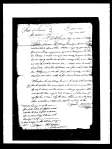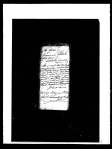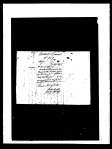
In Antebellum America, Southern municipalities generated revenue by confiscating and reselling illicit slaves through public auctions.[1] In 1807, Congress prohibited the international slave trade, a year later, Louisiana followed suite, but this did not stop the trade. An illicit trade from Africa across the Atlantic continued to supply the America South with slaves. Illegal slaves were forfeited to the state. The Sheriff’s department placed these slaves in prison to await resale to the public. These findings raise questions about the role of the state in the slave trade, property laws, municipal revenues, and contributions of the sale of slaves at “property auctions” to modern city infrastructures.
According to Edward Baptist, from 1830 to 1840, slave traders brought nearly one million slaves from Africa to the Americas–mainly in the Caribbean–despite the ban on the international slave trade.[2] Slaves brought to Cuba, often found their way to the American South. Once in America, African immigrants were enslaved and put to work. In some cases, however, local officials would hear about “illegally imported” slaves and investigate. Sheriffs would ask suspects for records or proof that they purchase whatever slaves were in their possession. These records were certified bills of sale, receipts of which were kept with local notaries. If an owner failed to provide the proper records, the sheriff might take the slaves into custody, place them in jail, where they waited till they were officially forfeited to the state, then resold to the public. From the court petitions covered below, it is not clear what happened to the slave-owner, but it is clear that slaves were not sent home, but instead became the property of the state, put in jail, and were resold.
Around December, 1812, three Africans were “illegally imported… from the coast of Africa or some other foreign port or country” to New Orleans. Though the details of the case are not included in petition, Attorney General F.X. Martin claimed that, because of their illegal entrance, the slaves “have become forfeited to the state.”[3] May, 1814, Attorney General Francis Martin petitioned the state to “detain and sell an enslaved man named Harry.” He was sold for 392.00 dollars — “one half to the informer and the other to the State Treasurer.”[4]
In the case of state petitions to seize and resell the slaves, the slaves are defendants. For instance, June 5th 1816, acting Attorney General, Stephen Mazureau Esq. claimed that three “defendants, Antoine, Reine, and Juan de Lacruza, are slaves who ‘have been illegally imported into this State contrary to law.'” Their ports of origin hardly mattered, Mazureau claimed that Juan de Lacruza came “from Carthagena or some other foreign place or country.” Carthagena might be South America, Spain, or maybe even North Africa.[5]
Antoine (Rodriquez), however, claimed that he was not a slave. He asked the judge to “be liberated from the Custody of the sheriff on his giving bond with J.H. Holland as his security and to not depart the state without leave of the court.” The judge agreed, allowing Antoine to go free for 500 dollars, with the promise to return to court so that his status as a free man might be determined. Reine and Juan de Lacruza were sold “to the highest bidder” for 262.54, paid to the state treasurer.
Informants, sometimes asked if the slaves could be sold to them, thus begging the question about the authenticity of their claims. For instance, August 18, 1817, four white men seized “five African negroes,” who they claim were “brought and imported from a foreign place into the said Parish of St. Mary [Louisiana], contrary to and in direct violation of the laws of the United States and the State of Louisiana.”[6] In September, 1817, Dempsey Snipes, John Pattie, Allen Key, and William Harris petitioned the 5th district court of St. Mary Parish for the state of Louisiana to take possession of the “five negroes” and in turn sell them to the petitioners for their duty to the state for discovering the illegally imported slaves sell them to the petitioners that the five Africans will be “forfeited to the use of the said State of Louisiana and to the Said Snipes, Pattie, Key and Harris as informers and as such that they may be sold and disposed of according to” law. petition two females, one of whom is from six to ten years of age & the other between ten and fifteen years of ages., 1817 four men petitioned the District Court of St. Mary Parish, Louisiana.
These cases indicate that the state was directly involved in the sale of slaves, money made from auctions supported the state, city, or town’s infrastructure. But there are many other questions that need to be answered before we understand the extent of slavery’s role in the expansion and maintenance of local government and cities infrastructure? How much did the state (by state, I am referring to any governing entity) make through these auctions? Did state sanctioned slave auctions create an “Urban Renaissance” in the American South like it did in slave port cities such as Bristol a century earlier? How genuine were informants’ information? Did the state care about the accuracy of informants’ information? Did the illicit trade give the state incentive to enforce property laws? In the nineteenth century, many free blacks lived in the South, especially New Orleans and some even owned slaves, but there are countless stories of foreigners (Africans) being kidnapped and sold into slavery while their ships were stationed in New Orleans. One of the more famous cases involved the movie Twelve Years a Slave, but what about other cases, such an Antoine? When Africans first arrived in the American South during this period, they were labeled as a slave until proven otherwise. The burden of proof fell on Africans recently brought to the South, brought to a strange place, with laws alien not only to themselves, but even some of the contemporaries.
It is my hope that further research on this topic contributes to current research on Slavery’s Capitalism and nineteenth century American economic development. This work falls outside my area of focus. I posted this blog to open dialogue, and offer others–more qualified–with a starting point. Below. I made some comments on the sources I worked with on this. I also include links to the Petitions project. And of course, I must apologize for inability to cite old court cases. The petition numbers correspond to the petitions on the petition project website. I hope this inspires scholars for more research. I am willing to collaborate or even do research (for free). Please feel free to contact me: Todd Burst tsrub88j@gmail.com.
Note on Sources:
The Digital Library on American Slavery (DLAS), based out of the University of North Carolina Greensboro, provides researchers with several links to several databases pertaining to slavery in North America. The DLAS acts as a central point for researchers to find information pertaining to various aspects of slavery. One such database that can be accessed through the DLAS site is the “Race and Slavery Petitions Project.” The DLAS says this about the “Race and Slavery Petitions Project,” “The Project contains detailed information on about 150,000 individuals, including slaves, free people of color, and whites, extracted from 2,975 legislative petitions and 14,512 county court petitions, as well as from a wide range of related documents, including wills, inventories, deeds, bills of sale, depositions, court proceedings, amended petitions, among others.” The petitions project covers the years between 1775 to 1867 “in fifteen slaveholding states in the United States and the District of Columbia.”
The petitions pertain to any legal grievance whether from free person of color, slave, or free white persons. The database provides insight into genealogical information, courts in the eighteenth and nineteenth centuries, contemporary beliefs from court records and insight into relationships between the economy and law. Informational of the online database includes, but is not limited to: “young slave owners”; “warranties on slaves”; “Slave title disputes”; “passing as white”; and “free people of color held as slaves.”
The “Race and Slavery Petitions Project” is in the process of publishing two books with selected cases; these books however, only represent two percent “of petitions held in the collection.” The actual collection consists of 151 reels of microfilm. For researchers interested in finding the original copies of the petitions, the microfilm is freely available and the website provides an index to help researchers find the relevant material. Louisiana petitions consist of eighteen reels of microfilm from 1795 to 1863. These petitions are in Section II Part F of the collection. For instance, if a research wanted to find petitions in the year 1830, the appropriate citation would read: “Race and Slavery Petitions Project” II/ F/ 7.
The “New Orleans Public Library” provides a research aid to help students and researchers narrow their search before going to the archive and annoying the archivist. In the finding guide to the 4th District Court is reference to the “Mormon Family History Center,” which has collected important documents in Louisiana and have published some of the docket books online at FamilySearch.org (free access). Discovering and seeing the docket referring to the case of William Houston online can help researchers feel as if they made some headway.
The full petitions have been submitted online with the ProQuest “Slavery and the Law Digital Library.” ProQuest is a membership database, meaning that researchers can only log onto the site through their respective institution, if their institution has paid the necessary membership fee. These fees cost exorbitant amounts of money and although cites like ProQuest offer free trial memberships, they are not often available for individual researchers or students.
Race and Slavery Petitions Project
–Todd Burst
[1] Surplus property auctions provide local municipalities financial support through “the disposal of surplus equipment, materials, supplies, and confiscated assets. “New Orleans Surpluses Property Auction website: http://www.nola.gov/surplus-property-auctions/.
[2] Baptist, Edward. The Half Has Never Been Told: Slavery and the Making of American Capitalism. Basic books, 2014, 298
[3] Petition 20881438; Race and Slavery Petitions Project Series 2, County Court Petitions The University of North Carolina at Greensboro
[4] New Orleans first district court 1815. #20881413; Race and Slavery Petitions Project Series 2, County Court Petitions The University of North Carolina at Greensboro
[5] Jun 5, 1815, Records of the First Judicial District Court; Orleans Parish, Louisiana; Accession: #20881505; Race and Slavery Petitions Project Series 2, County Court Petitions The University of North Carolina at Greensboro
[6] Petition #: 20881767; Race and Slavery Petitions Project Series 2, County Court Petitions The University of North Carolina at Greensboro














Reblogged this on Spectres of Modernity.
LikeLike